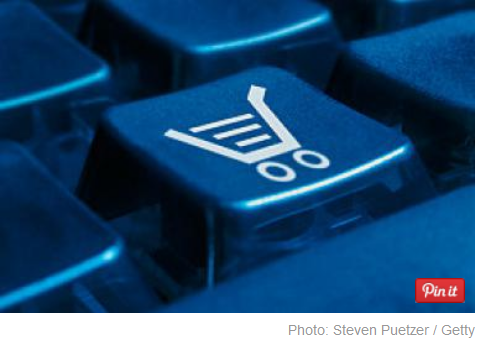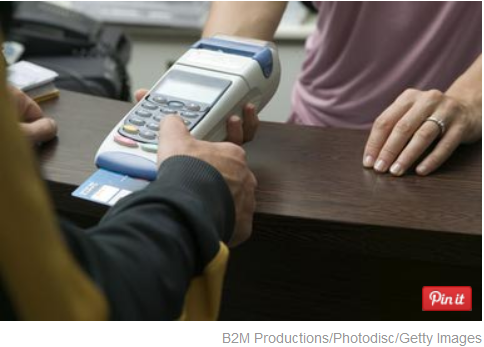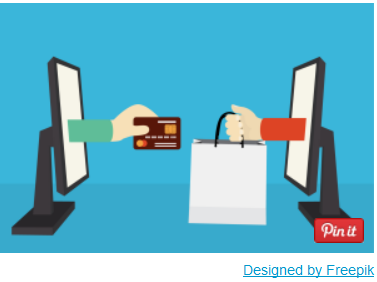
When shopping online, shopping safely online can be a challenge, especially if you stray from the larger e-tailers to get a better deal from a lesser known site. Here are 10 tips to help you gain some peace of mind while shopping online.
1. Check the seller’s customer satisfaction ratings.
Other people’s experiences with the merchant that you are considering are often an excellent gauge of what to expect when you order. Review other user’s comments and check out the seller’s rating on sites like Google Shopping. Low “star” ratings may provide a red flag that cautions you to find a more reputable seller.
2. Check the Better Business Bureau site to see if there are a large number of complaints about the seller.
The Better Business Bureaus of the United States and Canada are excellent resources to find out specific information about merchants, including whether or not they have any complaints against them related to delivery, product issues, or refund or exchange problems.
3. Whenever possible, use a credit card for payment.
According to the American Bar Association’s website, safeshopping.org, it is best to use a credit card when paying online because federal law protects credit card users from fraud and limits individual liability to $50. Some card issuers might even waive the $50 liability fee or pay it for you.
Consider opening a separate account for buying online so your online purchases don’t get lost in the sea of Starbuck’s coffee transactions in your online banking ledger. Also, look into virtual credit cards if your card issuer offers this service. Some card issuers will give you a one-time use virtual card number that you can use for a single transaction if you are concerned about the security of a particular merchant.
4. Never enter your credit card information on a page that is not encrypted.
When using the online checkout process of a seller, always make sure that the web address has “https” instead of “http.” Https ensures that you are using an encrypted communications path to transmit your credit card information to the seller. This helps to ensure against eavesdropping on your transaction.
5. Go directly to the seller’s site rather than clicking a “coupon” link that was sent to you by an unknown source.
Scammers can often use a tactic called cross-site scripting to craft a hyperlink that appears to be the actual merchant site but actually relays your credit card information to the scammer when you put your payment information into the payment web form. Unless you can verify that a coupon came from the actual vendor’s site to which you have already subscribed, it’s best to avoid random coupons with unknown origins.
6. If you are ordering from a shared computer (i.e. the library, computer lab, or a work PC), log out of the shopping site and clear the browser history, cookies, and page cache.
This seems like a no-brainer, but if you’re using a shared machine, always log out of the store website and clear your browser’s page cache, cookies, and history when you are finished ordering something, or the next guy who sits down at the PC you were using might just have himself a little shopping spree on your dime.
7. Never give your social security number or birthday to any online retailer.
Vendors should never ask you for your social security number unless you are applying for in-store financing or something to that effect. If they are trying to require you to enter a social security number just to order a product, then they are most likely scammers. Run away fast. While your birthday may seem like an innocent enough piece of data to give out, it’s just one more of the three to four data elements needed by a scammer to steal your identity.
8. Find out the seller’s physical address.
If your seller is in a foreign country, returns and exchanges may be difficult or impossible. If the merchant only has a P.O. box listed, then that may be a red flag. If his address is 1234 in a van down by the river, you may consider shopping elsewhere.
9. Check out the seller’s return, refund, exchange, and shipping policies.
Read the fine print and watch out for hidden restocking fees, crazy high shipping charges, and other added fees. Beware of “coupon clubs” that the seller might try to get you to sign up for during your purchase. These clubs may save you a few dollars, but often they involve monthly billing for the privilege of joining.
10. Check the seller’s privacy policy.
While we might not think about it, some sellers resell our personal information, buying preferences, and other data to market research companies, telemarketers, and spammers. Read carefully and always make sure that you are opting-out and not opting-in when asked whether you want to have your information shared with “3rd parties” (unless you like a lot of spam in your e-mail). You may also want to obtain a separate e-mail account to use while shopping online to avoid clogging up your personal e-mail box with the barrage of sale ads and other junk mail that is frequently sent out.
Be smart, be safe, and know that there are groups such as the Internet Crime Complaint Center that can help you if you think you’ve been outright scammed. Check out our other resources below on how to shop smart.
Read the full post in about tech
=============================================================
Thinking to sell your house or Condo in Central Toronto areas and/or in downtown Toronto areas? Please visit http://www.TorontoHomesMax.com for a FREE Home Evaluation“ or please call, text or email Max Seal, Broker at 647-294-1177. NO obligation.
Thinking to buy a House or Condo in Central Toronto areas and/or in Downtown Toronto areas? please call or text Max Seal, Broker at 647-294-1177 to buy your dream home or Condo. I offer you a 30-min “FREE buyer’s consultation” with NO obligation.
Please visit my website http://www.centraltorontorealestate.com/ to find out available homes and Condos for sale in Central Toronto areas and/or in downtown Toronto areas.
This Toronto housing market may be a better time for “Move-up”, “Move-down” or “Empty-nester” Sellers and Buyers. Want a “Market Update” of your home in 2019? Please click the image below or call or text Max Seal, Broker at 647-294-1177 or send an email.
Want a “Market Update” of your home? Please click the image below. Or call or text Max Seal, Broker at 647-294-1177 or send an email.
(** some conditions apply. We value your privacy, all your information will remain confidential.)









